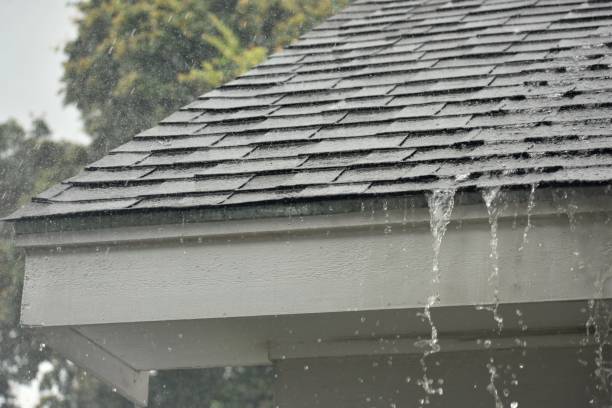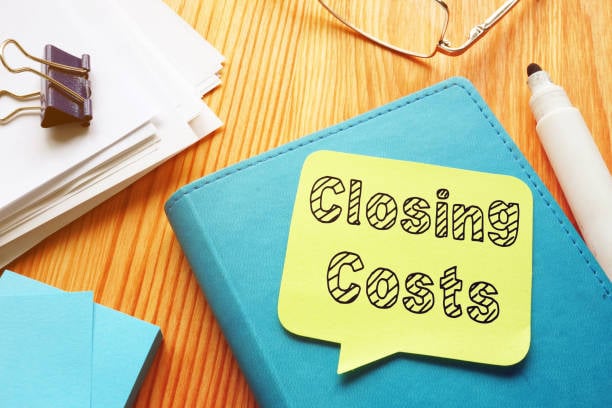Selling a House in California & Moving Out of State: Relocation Guide
Whether you’re moving out of state for a new job, to broaden your horizons, to be closer to family, or to make the most of your retirement, you’re facing a major undertaking. Fortunately, selling a house in California and moving out of state needn’t be overwhelming.
Once you’re armed with the information we’ve carefully compiled regarding how to sell your home quickly and embark on life’s next chapter, you’ll be well on your way to enjoying whatever comes next.
Table of Contents
Selling a house in California and moving out of state
If you’re selling a house in California and moving out of state, you’ve got a lot on your plate, and keeping things as simple as possible is almost certainly the best option. In the last several years, Californians have been moving out of state in unprecedented numbers, and the reasons that are cited most often include:
- Obtaining more affordable housing
- Being closer to family
- Selling house for job relocation
- Enjoying retirement on a budget
Whatever your reason for leaving the State of California, however, you not only need to sell your house here but also need to find a place to live in your new home state, and it’s a lot. The process of selling an existing home can become very complicated very quickly, and it can get in the way of your fresh start.
How to sell your house and move out of state
The matter of how to sell a house and move out of state depends on a range of variables. For example, if you’re in no particular hurry to move and are not especially concerned about limiting the cost of your move, your options are nearly limitless.
Most of us, however, do want to keep costs down and are very interested in streamlining the process, which makes considering your best options advised.
Sell to a Real Estate Investor
An excellent first option, if you are one of the many people moving out of California, is selling to a real estate investor like SoCal Home Buyers. We help simplify the process of selling your old home and moving to a new state in all the following ways:
- With us, there’s no need to repair or maintain the house you want to sell. We make selling a house as is in California part of the deal.
- With us, there’s no reason to pretty your property up for open houses or showings. We’ll take care of all that.
- We allow you to bypass the expense and time constraints of working with a real estate agent.
- We make sure that you don’t need to concern yourself with the logistics of selling your home and buying a new one – all while navigating a move and potential job change.
- With us, you won’t need to juggle trying to sell a home while buying in another state – or to own two homes at once.
We’ll make a fair offer to buy your home quickly – freeing you up to fully embrace whatever comes next for you and your family.
Leaseback
If you’re preparing to sell and move, but the timing isn’t perfect, a leaseback may be an option you’d like to consider. Leasebacks are generally negotiated prior to the sale of a property, and they involve selling your home in California but including a contractual obligation that the new homeowner allow you to continue living there. A leaseback can include the following advantages:
- Increasing your cash flow based on cashing out the equity in your home
- Allowing you to continue living in your home for the amount of time determined in the contract, which can be long term
If your intention is selling your house in California and moving elsewhere, any leaseback you’d be interested in would likely be short term. Some of the disadvantages of leasebacks include:
- You release title and ownership of your home.
- You pay the new owner rent to remain in your home, and the rent amount can fluctuate.
- There are situations in which your lease can be revoked, such as if the new owner decides to make the home their primary residence.
- You won’t benefit from any appreciation in the real estate market that applies to your home moving forward.
Sell to a Realtor
You’re looking for a way to sell your home because you’re moving out of state, which isn’t an easy proposition, and you make think that the obvious solution is turning to a real estate agent. While this is the traditional approach, there are some important points to consider, including:
- Managing a home for sale in California along with the purchase of a house elsewhere – all while orchestrating a move – can be overwhelming.
- Selling a house through a real estate agent involves a lot of leg work, including having repairs made and maintenance addressed.
- Selling a home through a real estate agent involves readying the home for open houses and showings, which can can require a lot of time, expense, and effort.
- The time it takes to sell a house through a real estate agent can drag on, which can interfere with the plans you’ve made for your future.
Sell the House Yourself
Many people think they’re well equipped to sell their homes on their own – until they get started and recognize exactly how complicated the process tends to be. If you decide to sell your house yourself, you’ll need to take all the important steps you would with a realtor in addition to shouldering all the responsibilities.
If you don’t have time to learn the ropes of selling a home in the current market – in addition to everything else you have going on – selling your house yourself is unlikely your best option.
Relocation Company
Another option is a relocation company. Generally, this is an approach that new employers instigate in order to sweeten the deal and get new hires up to speed in their new jobs. Relocation companies and the homes they sale, are often referred to as relos. A relo can can handle a range of primary tasks related to buying and selling homes, including:
- Selling your current home, which can include either buying you out or listing the property on the market
- Purchasing your new home in your new state
It’s important to keep in mind that the relocation company is invested in keeping buyouts low, and if you list with a relo company, you should be aware of all the following:
- If you’re ready to buy from the relo company, your powers of negotiation may be enhanced – based on the company’s desire to make a quick sale rather than to spend time negotiating the best price.
- Working with a relocation company can take longer in terms of both buying and selling.
- Relocation companies broker in clean transactions, which means they’re less likely to bother with any contingencies you may request.
Rent-Back Agreement
There are also unique situations in which rent-back agreements can apply – usually for a very limited term. Consider the following scenario, which lends itself well to a rent-back agreement:
- You find the perfect home for your family in your new location, but if you don’t act fast, the opportunity to buy it will have passed.
- You won’t be ready to move for several months.
- You found a buyer who made you an offer above market value, but they won’t be ready to take ownership for several months.
In situations like this one a rent-back arrangement can help both the buyer and the seller transition toward ownership of their new homes with the least amount of upset.
At SoCal Home Buyers, we understand how complicated buying a home in another state before leaving California can be, and in some situations, we offer short-term rent-back arrangements that make things easier for our clients.
If you’re interested in selling your home before you move and have concerns about what you’ll do in the meantime, reach out for more information about when rent-back arrangements are available.
How to buy a house when moving out of state
You’re moving to another state and buying a house,and you very obviously want the process to go as smoothly as possible. One option that helps to guarantee this outcome is working with cash buyers in California who buy as-is properties like yours, which can help pave the way toward smoothly transitioning into your family’s next home.
At SoCal Home Buyers, we pay a fair price that will allow you to sell your home fast – with an eye toward moving on. In addition to working with reputable real estate investors like us, you have other options.
Leasebacks and rent-back agreements
These are contractual agreements that are made with your home’s new owner. Leasebacks are generally made for longer terms that are designed to keep you in your home while improving your cash flow – based on your equity.
Rent-back agreements, on the other hand, tend to be short-term arrangements that are matters of convenience and can help facilitate smooth transitions from state to state.
Selling through an agent or on your own
Selling your home through a real estate agent helps to ensure that everything proceeds according to plan. The fact is that the sale of property in one state to buyers in another state is subject to strict federal and state regulations, and a realtor can help you address these details head-on. The downside is that selling a house through a realtor is also a far more costly and time-consuming endeavor.
Selling your house on your own comes with all the inconveniences and some of the expenses associated with selling through a realtor and none of the protections.
Relocation Company
Another selling option – if you are moving as a result of your career – is a relocation company, which can tackle both selling your home in California and purchasing your new home in your new state. This can simplify the process and can even score you a deal on that new home – if you purchase one of the relocation company’s buyouts.
It can also, however, be more time consuming, and there can be a financial downside to the relocation company buying you out, which involves them angling for the lowest sale price. Further, a relocation company may not want to bother with a home sale contingency– if you need one.
Relocating and need to sell a house fast?
You’re relocating and need to sell a house fast, and the surest way to do so without all the hassle is with a California real estate investor. There are a lot of companies that buy houses in California, but we at SoCal Home Buyers are committed to speedy sales, to fair cash offers for houses like yours, and to a sales process that is as painless as possible.
Consider how the realtor process generally works.
1. Consulting with a real estate agent
To begin, you’ll need to reach out to a real estate agent to get the ball rolling, and from here, things become both labor intensive and time consuming. This is not to mention the fact that your realtor will also take a considerable chunk out of your bottom line.
2. Cleaning from top to bottom
Your real estate agent will advise you to get your house sparkling clean before you even think about moving forward. This is a daunting prospect at the best of times, but you’re preparing to uproot your family and move, which makes things that much more challenging. While you can pay for your home to be deep cleaned, it’s a costly process that can take a considerable amount of time.
3. Making Repairs
if you’ve lived in your home for any length of time, there are repairs that need to be made, and your realtor will advise you to take care of them now. This involves finding a reputable repair person or company, scheduling the repairs, living with the mayhem that comes with this kind of work, and shelling out the money to pay for it. And if the materials needed to make the repairs aren’t readily available, the whole thing can come to a grinding halt before its even off the ground.
4. Attending to maintenance
Every home requires a considerable amount of maintenance and general upkeep, but if you’re preparing to move, you’ve got plenty on your plate, and some of the basics may have fallen by the wayside. Selling a home through a realtor requires staying as up to date as possible with regular maintenance – no matter how busy you are.
5. Adding a fresh coat of paint in neutral colors
Buyers in the market for a new home want to imagine the place they’re viewing in their own color scheme, and they can have a hard time getting past your color palette.
If your walls aren’t freshly painted in the kind of neutral colors that catch the light and invite potential buyers to dream big, you’ll likely need to invest in this time-consuming and expensive project, which requires meticulous care.
6. Improving your home’s curb appeal
As you undoubtedly know, first impressions matter, and when viewers pull up at your place, its curb appeal will play a staring role. This means you’ll want to put some effort into jazzing the place up, which may involve any combination of the following:
- Fresh landscaping
- Improved gardening efforts
- Artfully arranged potted plants
- Fresh paint in an attractive color on your front door
- A face lift in the form of new house numbers
- A new mailbox with a clean design
- A beautifully manicured lawn
Each of these can help transform a home from humdrum to inviting, but they all require time, effort, and money.
7. Letting the light shine in
You’ve come this far, and now it’s time to show off all that hard work. A dark home that shuts out a good deal of natural light is not homey. Natural sunlight showcases everything in its best light, and this is what you’re going for when you show your home.
Throwing open the curtains and raising the blinds to your newly spotless windows is the name of the game. Ensuring that you also have attractive lighting throughout the house – overhead lighting is generally considered too jarring and fails to get the job done – is also essential to your efforts.
8. Staging the place
Once you’re ready to organize an open house and schedule showings, it’s time to venture into staging. Staging involves paring things down to the point that your home looks more like a showroom than an actual home but still manages to inspire a cozy feel.
In other words, it’s a tall order, and you may need to hire a professional stager. Good staging can transform your home from one you can’t sell to one that’s in hot demand, but it comes at a price.
Here’s how it works with us:
With SoCal Home Buyers, there is no need to hire anybody, there is no scheduling to worry about, there are no lengthy waits to anticipate, there are no costly expenses to factor in, and there is none of the inconvenience associated with having strangers wander through your home.
Instead, we offer a streamlined process that includes the following basic steps, which couldn’t be easier:
- Give us a call at 951-331-3844—or fill out the short form below—to request your fair cash offer.
- Await our prompt response to discuss your property in greater detail and schedule a one-time inspection that allows us to offer the highest amount possible.
- At the time of the inspection, our in-house inspector will quote you a fair cash offer, and if you’re on board, you can consider your home sold!
- Choose your closing date, and leave the rest to us. You can choose payment via check or wire transfer. It simply doesn’t get any easier.
Other considerations when you buy or sell a house when relocating
If you’re ready to buy a new house and sell an old one, you have questions, and the answers to some of the questions that are asked most frequently by others in your situation may help.
FAQS
What about capital gains tax when moving states?
Capital gains tax is a consideration if you’re selling your home. Short-term capital gains tax applies to profits on investments owned less than a year, and they’re calculated at the income tax rate – up to a maximum of 37 percent. Long-term capital gains tax, however, maxes out at 20 percent.
It’s important to note that there is a capital gains tax exclusion. If you’re a first-time seller of a personal residence, you can exclude a specific amount of your capital gain from taxation according to the following guidelines:
-Those who file single returns can exclude up to $250,000 of the capital gain.
-Those who file joint returns can exclude up to $500,000 of the capital gain.
Can I buy a home in another state before I move there?
Yes, you can buy a home in another state before you move there, but your California home may not sell quickly, which can leave you carrying two mortgages. This is a situation in which including a contingency in your purchase agreement may be the financially prudent option.
Can I sell my house from out of state if I want to relocate earlier?
You can sell your house in California from out of state, but you’ll need a realtor who can handle working with a remote client, coordinating the efforts of the professionals involved, including a stager, as well as arranging a remote closing (some realtors require the seller’s presence).
At SoCal Home Buyers, we’re well-prepared to work with you – regardless of where you are when you’re ready to sell your home. Whether this means you mailing a key to or leaving a key with a trusted family member or neighbor, we’ll make it work.
Once we’ve inspected your place, we can make a cash offer on the spot, which simplifies the process considerably.










